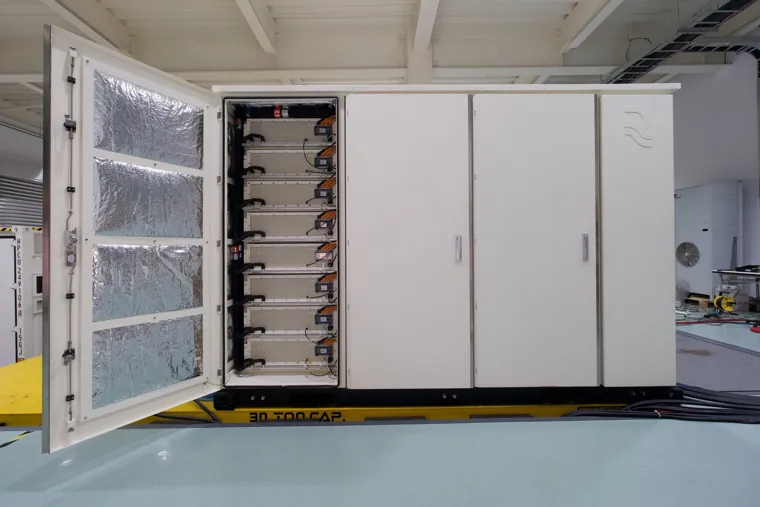Relectrify unveils world leading Australian designed battery with $25m funding boost from ARENA

The CEFC congratulates Relectrify on the development of its battery energy storage system and on securing new funding from ARENA. Since 2017, the CEFC has invested $9 million in Relectrify to support the continued development of its technologies that are achieving game-changing performance improvements for battery storage systems to help reduce the cost of renewable energy.
Relectrify media release:
6 October 2025
- AC1 battery energy storage system (AC1 BESS) designed for grid-scale and industrial use
- AC1 BESS delivers 20% more lifetime energy than conventional BESS technology
- Market launch backed by $25 million in new funding from ARENA
Relectrify has today unveiled a world-leading battery energy storage system (BESS) set to make BESS technology more efficient, resilient and cost-effective. The Australian-engineered AC1 Battery Energy Storage System (AC1 BESS) is designed for both grid-scale and industrial deployment with Relectrify securing $25 million from The Australian Renewable Energy Agency (ARENA) to support its launch.
The ARENA support comes after Relectrify recently completed a $19 million equity funding round to support general operations, featuring backing from six existing investors, including Virescent Ventures, and a new, minority investment from Houston, Texas-based Fortune 500 company NRG Energy.
Relectrify’s AC1 BESS utilises the company’s patented CellSwitch® technology, which independently controls and optimises the performance of every battery cell within a BESS. This technological breakthrough ensures the AC1 BESS delivers more energy every time it is cycled while also significantly extending BESS lifetime relative to conventional battery systems.
Relectrify CEO Jeff Renaud said: “AC1 BESS neutralises weaknesses in today’s battery systems with a proprietary architecture that can independently optimise the usage of every battery cell. The AC1 does things no other BESS can do, generating grid-compliant AC power directly from battery cells, without the need for a separate inverter. This all translates into enhanced safety, reliability and investment returns for BESS owners.
“Commercial and industrial energy users are the ‘missing middle’ in Australia’s energy transition and the AC1 is designed to fill this gap. While there has been an uptick in household battery deployments, without accelerated adoption of battery technology by industrial energy users, Australia’s transition is at risk of stalling.
“Not only is the AC1 BESS capable of being deployed at a grid level, but it is flexible and cost effective enough to be deployed by large energy users such as manufacturing, agricultural, data centre and commercial property businesses. With unpredictable energy costs leading to increasing uncertainty for businesses, the AC1 BESS gives large energy users the ability to take control of their energy use and reduce costs, all while supporting Australia’s transition to renewables. We’re thrilled that it is now available to Australian businesses.”
ARENA funding will support Relectrify to deploy the AC1 BESS at a number of commercial and industrial and small front-of-the-meter BESS sites. ARENA has previously supported Relectrify with two prior grants to help it develop its innovative battery management technology.
ARENA CEO Darren Miller said the project highlights the importance of backing early-stage technology and Australia’s leadership in battery innovation. “With early-stage support from ARENA, Relectrify was able to develop its technology and test its first deployments. Not everything went to plan, but through these early trials Relectrify developed a breakthrough with the potential to reduce costs and improve performance.
“What began as a project to reuse end-of-life batteries has now grown into a world-class battery management technology with the potential to transform energy storage. By backing home-grown innovators like Relectrify, we’re helping to bring forward technologies that could unlock new value from batteries and support the transition to a more flexible, low-emissions grid.”




